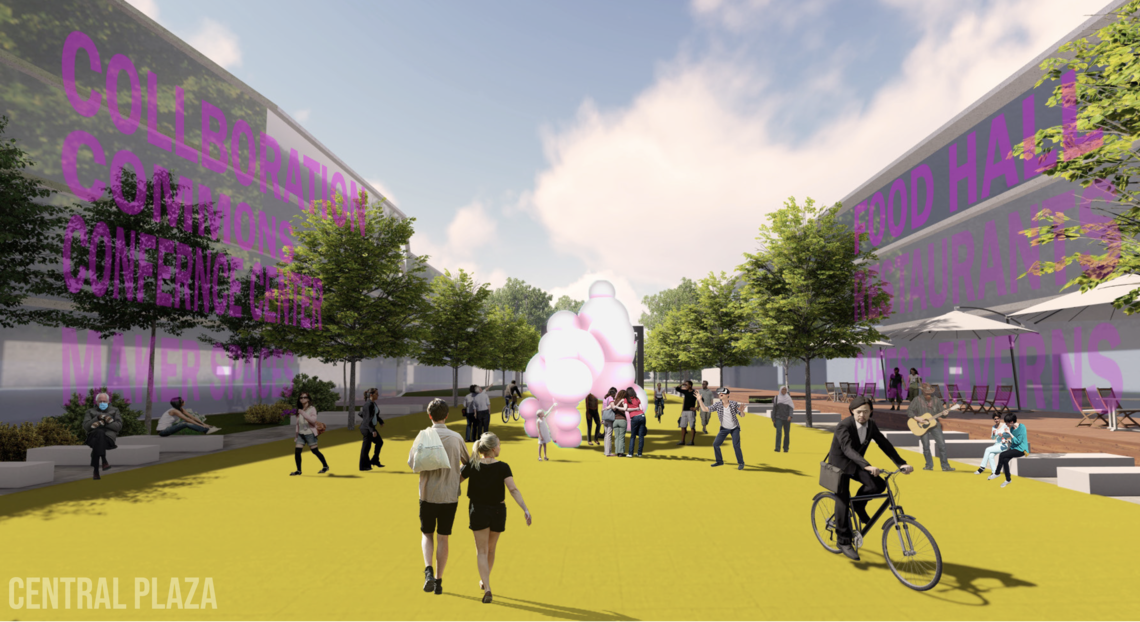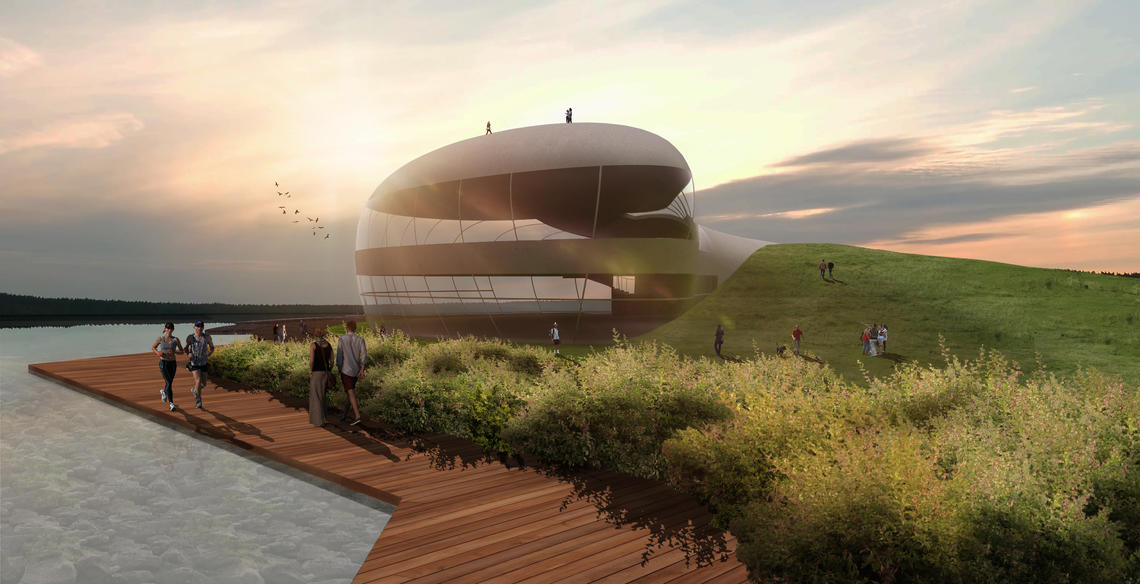June 11, 2021
Class of 2021: Landscape architecture grad has a deep reverence for nature as she reimagines cities

Calgary native Emily Kaing was working as a landscape technologist when she came to a realization that caused her rethink her career. The planet faces innumerable crises like climate change and public health; she wanted to dedicate her life to positive change.
“My father escaped to Canada from a war-torn country at the age of 15. He is always saying how grateful he is to be in a country that is safe and packed with natural beauty. In a way, my decision to become a landscape architect stems from our shared appreciation for natural environments and a desire to make the world around us a better place.”
Continues Kaing, “Landscape architecture is really ‘gluey’ and speaks the language of different professions. And I’m particularly passionate about the places that combine urban design with ecological restoration.”
Push past convention
Martha Schwartz is one of the world’s giants in landscape architecture, recognized for designing urban environments that meet 21st century challenges. One might call her an urban sustainability heroine. Kaing, who graduated with a Master of Landscape Architecture from the School of Architecture, Planning and Landscape (SAPL) at the University of Calgary, interviewed her with podcast co-host and good friend John Baziuk, MArch’21, earlier this year.
Kaing reflects, “I have a lot of respect for women who take a strong stand and make their mark on the industry without apology. Martha has made a career out of pushing past convention and nowadays, exploring how landscape architecture as a profession should confront the challenges of climate change. That to me is inspiring — how we shape our environment should always address the challenges of climate change.”
Compelled to explore a deeper, more profound relationship between people and the environment, and building on her past experience with boreal reclamation, Kaing seeks to merge seemingly unrelated narratives to reconnect people with nature. Her design concept in Landscape Architecture Studio II with Dr. Mary-Ellen Tyler, sited in Nose Creek Valley, is an example of her contemplative approach.

Glacier Walk, Moraines.
Courtesy Emily Kaing
“Over time, the creek was forced into channels to make room for the railway, and a variety of anthropogenic land uses removed a lot of native soil and vegetation. This history translates into an abundance of untapped potential, and my concept transforms ‘lost space’ into new open space amenity while amplifying functions of the wildlife corridor. Each overpass was modified to represent a stage of a glacier’s lifecycle, the landforms created by them, and abstractions of fauna derived from local historical glyphs.”
The design adds new habitats to overpass pillars and piers, such as bee hotels and cliff swallow nesting areas. Existing pathways perform double duty as a pollinator highway. Using an additive process, she proposes a more diverse, resilient place that tells a story about the history of glaciers that once moved through the area millions of years ago, and helps to mitigate biodiversity challenges.

Lost > Found, Senior Landscape Architecture Studio with Dr. Sandalack.
Courtesy Emily Kaing
“[Emily’s] background in geography and landscape architecture technology gave her a solid platform to develop further through the MLA program,” says Dr. Beverly A. Sandalack, PhD, professor with SAPL. “She has had a lot of practical work experience and direct contact with the land, including spending time looking at peat bogs and oil well sites, sometimes from a helicopter. What she seemed to develop over the past years in the MLA was a strong process for her studio projects.”

With Ji Song Sun, MArch’21, and Liyang Wang, MPlan’20, Kaing won the National Capital Commission competition with Fluvial, a new park along the Ottawa River inspired by the natural riparian forms and life.
This strong process is not only evident in her schoolwork — in recognition of her academic achievement and hard work, she received a 2021 CLRA Alberta Student Award — but in her extracurricular projects as well. With a position on the Student Association executive, as co-host of the Design Matters podcast, and as a member of winning design competition teams, she demonstrates what one can accomplish with a integrity, deep respect for everyone (and everything) around her, and a constant eye on the big picture.
Kaing says, “I thrive the most in collaborative environments, especially with peers from different backgrounds. Sometimes it is a challenge to collectively agree on a vision, but when you work with people who share values but come at them from a different perspective, amazing things can happen.”
Amazing fruits of collaboration
Adds Sandalack, “Always a hard worker, Emily was a student you could count on to help out and contribute to the class and to the program. Her good attitude and energy will be assets no matter what she does.”
Always up for a challenge, Kaing heads to the coast this summer. She’s accepted an offer to work in Burnaby, British Columbia as a landscape designer, with a firm committed to sustainable business practices with a social and ecological focus. But her crusade for change doesn’t shake her roots.
“As a person from Calgary, what makes me feel nostalgic is driving down the highway and seeing the Rocky Mountains. It is the landscape that tells me I’m close to home.”
View Emily Kaing's SAPL Graduate Show 2021.







